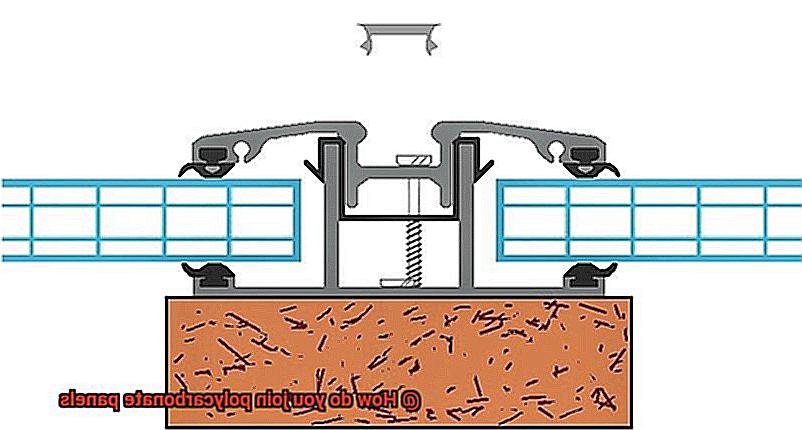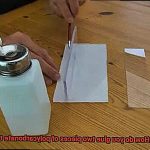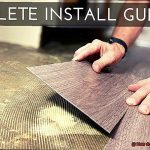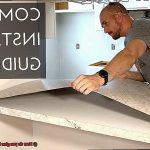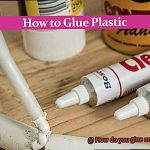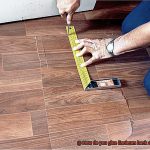Whether it’s a greenhouse, patio cover, or partition wall, knowing how to join these panels is crucial for a project that’s both stunning and sturdy. Polycarbonate panels are all the rage thanks to their toughness, UV resistance, and ability to let in natural light.
But without proper joining techniques, you’ll end up with a wonky connection that won’t do justice to your space. Fear not.
So, grab your trusty tools and let’s build something awe-inspiring that will stand strong against the test of time.
What is Polycarbonate?
Contents
- 1 What is Polycarbonate?
- 2 Adhesives for Joining Polycarbonate Panels
- 3 Two-Part Epoxy Adhesive
- 4 Solvent-Based Adhesive
- 5 Mechanical Fasteners for Joining Polycarbonate Panels
- 6 Heat Welding for Joining Polycarbonate Panels
- 7 Pros and Cons of Different Methods of Joining Polycarbonate Panels
- 8 Choosing the Right Method for Your Application
- 9 Conclusion
Polycarbonate, an extraordinary thermoplastic polymer, has transformed multiple industries with its exceptional properties. From unparalleled strength and transparency to impressive heat resistance and electrical insulation capabilities, polycarbonate offers a vast range of applications.
In this blog post, we will explore the key characteristics of polycarbonate and discover various methods for joining polycarbonate panels.
Unmatched Strength and Durability:
Polycarbonate is renowned for its incredible strength, surpassing glass by approximately 200 times.
This makes it an ideal material for critical safety equipment, such as bulletproof windows, riot shields, and safety goggles, ensuring unmatched durability in hazardous situations.
Its exceptional resistance to impact guarantees the safety of users, as it can withstand heavy blows without cracking or shattering.
Transparency Beyond Compare:
With its exceptional light transmission of around 90%, polycarbonate serves as a perfect substitute for glass in applications where visibility is paramount. Its optical clarity remains unaltered even after prolonged exposure to harsh weather conditions or sunlight.
As a result, it finds extensive use in skylights, greenhouse panels, and windows.
Heat Resistance and Weight Savings:
Polycarbonate exhibits remarkable heat resistance, maintaining its structural integrity in temperatures ranging from -40°C to 120°C (-40°F to 248°F). This property makes it ideal for applications involving high-temperature environments or direct sunlight exposure.
Additionally, its lightweight nature facilitates easier handling during fabrication and installation processes while reducing energy consumption during transportation.
Electrical Insulation Powerhouse:
Polycarbonate’s electrical insulation properties make it suitable for applications involving electrical components or equipment. It effectively resists the flow of electric current, ensuring safe usage in various electrical systems.
Methods for Joining Polycarbonate Panels:
To join polycarbonate panels effectively, several methods can be employed based on the specific application and desired outcome. Adhesive bonding using specially formulated glues or two-part epoxy adhesives provides a strong and durable bond.
Mechanical fasteners, such as screws or bolts, offer a secure connection that can be easily disassembled. Heat welding, while requiring specialized equipment, ensures a seamless and durable bond.
Adhesives for Joining Polycarbonate Panels
Polycarbonate panels, with their exceptional properties, are widely used across industries. To achieve seamless connections between these panels, adhesives are the go-to solution that not only maintain structural integrity but also offer an aesthetically pleasing finish.
In this article, we will delve into the factors to consider when choosing adhesives for joining polycarbonate panels and explore the different types available.
Factors to Consider:
- Type of Polycarbonate: Solid or multiwall? Different adhesives suit each type.
- Application Requirements: Indoor or outdoor usage? This affects the adhesive’s resistance to environmental conditions.
- Bond Strength: Evaluate the desired bond strength based on the load-bearing requirements of your application.
Types of Adhesives:
Ideal Applications: Solid polycarbonate panels in indoor environments.
- Two-Part Epoxy Adhesives: Offering excellent bonding strength and temperature resistance, epoxy adhesives are suitable for both indoor and outdoor applications.
- Ideal Applications: Multiwall polycarbonate panels in construction, automotive, and electronics industries.
- UV-Curable Adhesives: Curing upon exposure to ultraviolet light, these adhesives provide fast and reliable bonding solutions. Particularly useful for transparent or translucent polycarbonate panels.
- Ideal Applications: Transparent polycarbonate panels in display cases, greenhouses, and skylights.
Surface Preparation:
Before applying any adhesive, ensure the polycarbonate panel surfaces are clean and devoid of dirt, dust, and grease. Use isopropyl alcohol or a mild detergent for cleaning and lightly sand the bonding surfaces for enhanced adhesive grip.
Adhesive Curing Time:
Follow the manufacturer’s instructions regarding adhesive quantity and curing time. Allow ample curing time before subjecting the joined panels to stress or load to ensure maximum bonding strength.
Two-Part Epoxy Adhesive
Two-part epoxy adhesive is the answer to all your polycarbonate panel joining needs. This adhesive is not only strong but also incredibly easy to use, making it a top choice for professionals in various industries. Let’s dive into the world of two-part epoxy adhesive and explore its advantages and step-by-step process for joining polycarbonate panels.
Advantage #1: Unparalleled Strength
The main advantage of two-part epoxy adhesive is its exceptional bonding strength. This adhesive can endure heavy loads, vibrations, and impact, ensuring that your polycarbonate panels remain steadfastly joined together. No more worrying about your structure falling apart – two-part epoxy adhesive has got your back.
Advantage #2: Boundless Versatility
Flexibility is key when it comes to joining polycarbonate panels, and two-part epoxy adhesive offers just that. Whether you need to create butt joints, lap joints, or corner joints, this adhesive can handle it all. Its versatility allows for the creation of complex structures or designs using polycarbonate panels, providing endless possibilities for your projects.
Advantage #3: Indestructible against Harsh Conditions
Outdoor applications or environments with harsh conditions require an adhesive that can rise to the challenge. Two-part epoxy adhesive is more than up to the task. It boasts excellent resistance to moisture, chemicals, and UV radiation. This means that your polycarbonate panels will be safeguarded against water ingress, chemical damage, and color fading due to UV exposure. Say goodbye to concerns about your panels deteriorating over time.
Now that we’ve covered the advantages of using two-part epoxy adhesive, let’s dive into the step-by-step process of joining polycarbonate panels.
Step 1: Prepare Like a Pro
Achieving a strong bond starts with proper surface preparation. Ensure that the surfaces to be bonded are clean, dry, and free from any contaminants like dust, grease, or oil. For improved adhesion, roughen the surfaces with sandpaper or a suitable abrasive material, allowing the adhesive to grip onto them tenaciously.
Step 2: Mix It Up
Two-part epoxy adhesive consists of a resin and a hardener that need to be mixed together before application. Follow the manufacturer’s instructions to ensure equal amounts of each component are thoroughly combined. This guarantees that the adhesive cures properly and forms an unbreakable bond.
Step 3: Apply with Precision
Once the adhesive is mixed, evenly apply it onto the surfaces to be bonded using a suitable applicator or brush. Be sure to cover the entire bonding area with an ample amount of adhesive. This ensures maximum bonding strength and durability.
Solvent-Based Adhesive
Solvent-based adhesive is the go-to method for joining polycarbonate panels. This type of glue contains solvents that act as carriers for the adhesive properties, making it easy to apply and spread evenly on the surfaces of the panels. The versatility of solvent-based adhesive is a major advantage. It can be used to join different types of polycarbonate panels, including solid sheets, multi-wall panels, and corrugated sheets. This makes it a popular choice for a wide range of applications, from construction projects to greenhouse installations and even signage.
However, using solvent-based adhesive requires careful consideration. Proper surface preparation is crucial for a successful bond. Before applying the adhesive, it’s important to clean the panels thoroughly with a mild detergent or alcohol solution to remove any dirt, dust, or oils that could hinder adhesion. Additionally, the surfaces should be completely dry before applying the adhesive.
Applying the adhesive itself requires precision and adherence to manufacturer’s instructions. It should be applied in a thin and even layer on both surfaces that will be joined together. Following curing time and temperature requirements is essential for achieving a strong bond. Solvent-based adhesives typically require some drying time to fully set and form a durable connection.
One consideration that cannot be overlooked is the volatile nature of solvent-based adhesive. The solvents contained in the adhesive can emit fumes that may be harmful if inhaled in large quantities. Therefore, it is crucial to work in a well-ventilated area or wear appropriate personal protective equipment when using this type of adhesive.
Another important consideration is compatibility with certain polycarbonate panels. Some panels may have special coatings or treatments that can react negatively with certain solvents. To avoid any damage or adverse reactions, it’s always recommended to test the adhesive on a small, inconspicuous area before applying it to the entire surface.
In terms of bond strength, solvent-based adhesives can provide a strong and durable connection between polycarbonate panels when applied correctly. Proper alignment and pressure during the curing process are crucial for achieving the desired results.
Mechanical Fasteners for Joining Polycarbonate Panels
When it comes to joining polycarbonate panels, the method you choose can make all the difference in creating secure and durable connections. While solvent-based adhesives are a popular choice, mechanical fasteners offer a reliable alternative that provides strength, versatility, and ease of installation. In this blog post, we will explore the various types of mechanical fasteners used for joining polycarbonate panels and discuss why they are crucial in creating secure connections.
Screws:
Screws are the workhorses of mechanical fasteners when it comes to joining polycarbonate panels. Made of stainless steel or other corrosion-resistant materials, these screws provide durability and prevent rusting. Pre-drilling holes in the panels before inserting screws is essential to prevent cracking or splitting, especially for thicker or high-density panels.
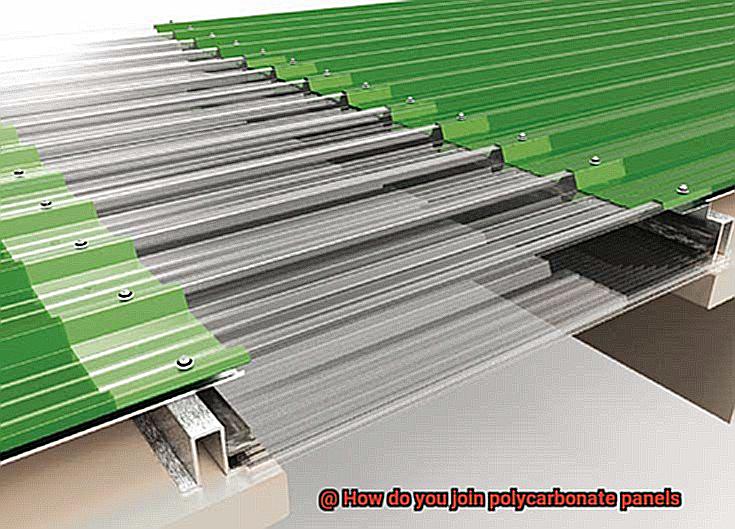
Rivets:
For a permanent connection between polycarbonate panels, rivets are an excellent choice. To use rivets, holes are drilled through the panels, and the rivets are inserted through the holes and secured on the other side. This creates a strong and flush connection between the panels that can withstand the test of time.
Clamps:
When working with large panels or requiring temporary connections, clamps offer a versatile option for joining polycarbonate panels. These clamps hold the panels together tightly, ensuring a secure bond until a more permanent fastening method can be applied. They are easy to install and remove, making them suitable for various applications.
Choosing the Right Fastener:
Selecting the correct size and type of mechanical fastener is crucial for creating secure connections with polycarbonate panels. Using the wrong fastener can result in weak connections or damage to the panels. Additionally, considering the spacing between fasteners based on structural requirements and manufacturer guidelines ensures optimal performance.
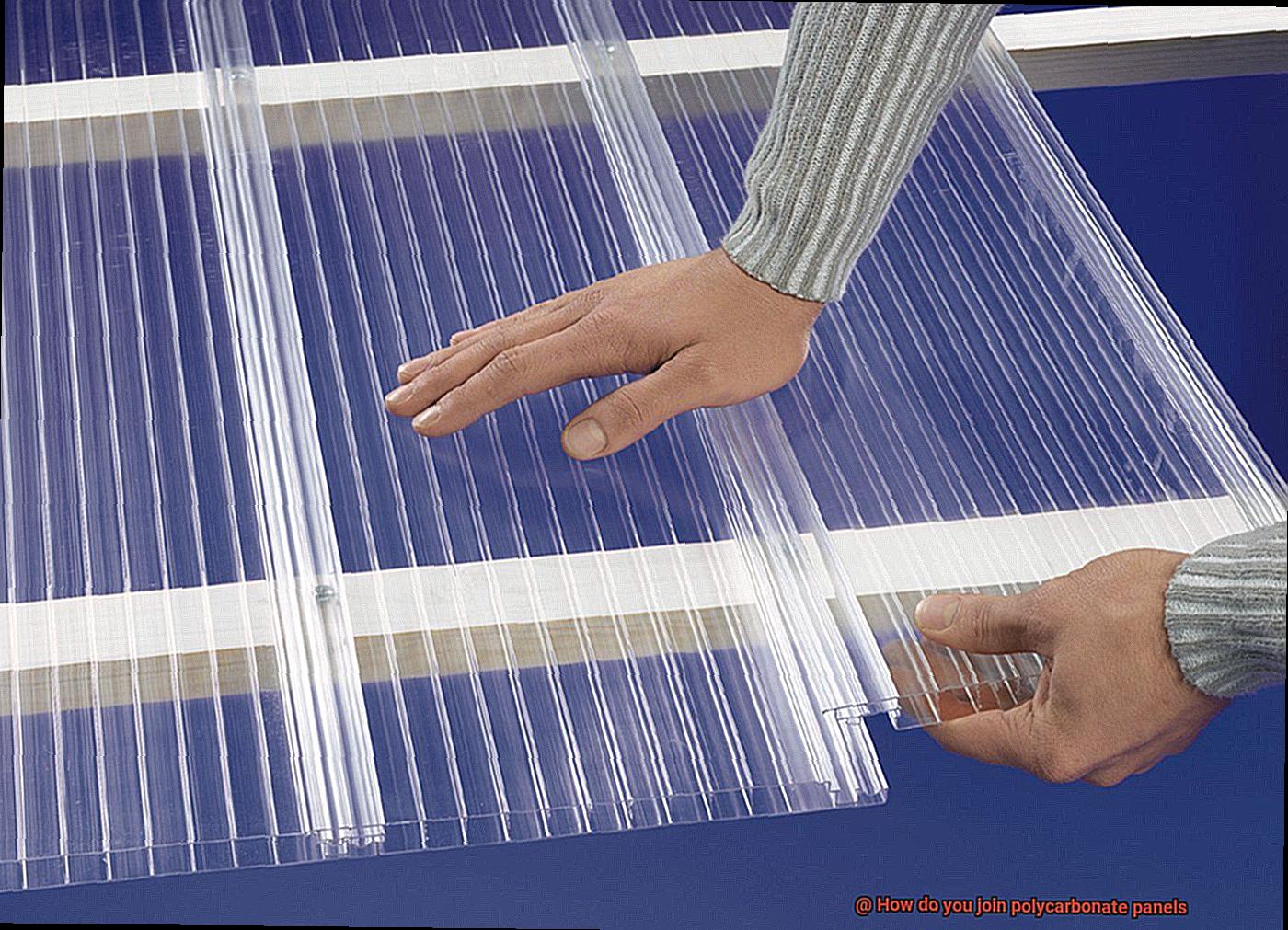
Heat Welding for Joining Polycarbonate Panels
When constructing a structure with polycarbonate panels, the method chosen to join them is crucial. While adhesive bonding and mechanical fastening are popular options, heat welding is a hidden gem that offers seamless and durable joints. In this blog post, we will explore the advantages and limitations of heat welding for joining polycarbonate panels, equipping you with the knowledge to make an informed decision for your next project.
Advantages of Heat Welding:
Seamless Perfection:
Imagine a joint so seamless that it appears invisible. This is precisely what heat welding offers. By softening the edges of the panels with a specialized heat gun, they can be pressed together to create an almost flawless bond. Heat welding is perfect for applications where aesthetics are important, such as architectural projects or display cases.
Time-Efficient:
When time is of the essence, heat welding comes to the rescue. Once the panels are prepared and heated, the actual welding process can be completed within minutes. Compared to adhesive bonding or mechanical fastening, heat welding offers a quick turnaround without compromising on strength or durability.
Unrivaled Strength and Durability:
Heat-welded joints are known for their exceptional strength and durability. The fused edges create a solid connection between the panels, making them resistant to temperature fluctuations, moisture, and UV exposure. This makes heat-welded joints suitable for both indoor and outdoor applications, ensuring your structure stands strong against the elements.
Limitations of Heat Welding:
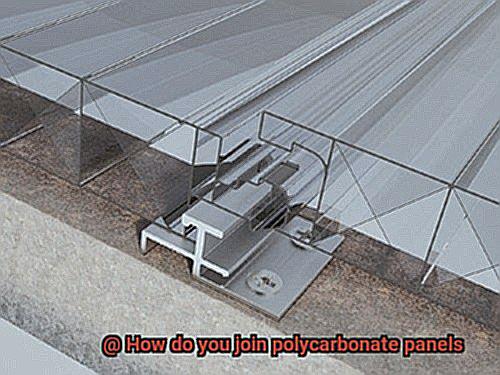
Expertise Required:
Heat welding is not a method suitable for DIY enthusiasts. It demands precision, experience, and careful handling to ensure a successful bond. Professionals or individuals with prior experience in working with polycarbonate panels should handle the process to avoid damage or weak joints that may fail over time.
Compatibility Concerns:
Not all polycarbonate panels are suitable for heat welding. Panels with special coatings or finishes that can be damaged by heat may not be compatible with this method. Additionally, panels with complex shapes or designs may pose challenges in aligning and evenly heating the edges, making heat welding impractical.
Pros and Cons of Different Methods of Joining Polycarbonate Panels
Joining polycarbonate panels is a crucial step in many projects, from building greenhouses to skylights and display cases. With an array of methods available, it can be challenging to determine the best option. Fear not, as we delve into the pros and cons of different polycarbonate panel joining methods, allowing you to make an informed decision.
First up, mechanical fasteners like screws or bolts. These offer a robust and secure connection, with easy installation and disassembly. However, beware of stress points that can lead to cracking or damage. Plus, visible fasteners may tarnish the aesthetics of your installation.
Next, adhesive bonding. This method provides a seamless and visually appealing joint by eliminating visible fasteners. It evenly distributes stress, reducing the risk of cracks. Yet, be prepared for thorough surface preparation and curing time. Disassembly can also prove more challenging.
Thermal welding is another technique where heat melts and fuses panel edges together. This creates a durable joint resistant to water infiltration. Say goodbye to visible fasteners or adhesives as thermal welding ensures a seamless connection. However, expert temperature control and fusion are essential to avoid discoloration or warping.
Enter interlocking systems, commonly used in roofing applications. These systems boast profiles allowing panels to interlock, creating a watertight seal. Enjoy a secure and durable connection with minimal leaks or damage risk. While installation and disassembly are relatively easy, additional accessories might be necessary.
Lastly, hybrid methods combine different techniques for added strength and stability. Imagine using mechanical fasteners alongside adhesive bonding for the best of both worlds. Hybrid methods minimize drawbacks while maximizing advantages. Nevertheless, brace yourself for more complex installation procedures and additional materials.
Choosing the Right Method for Your Application
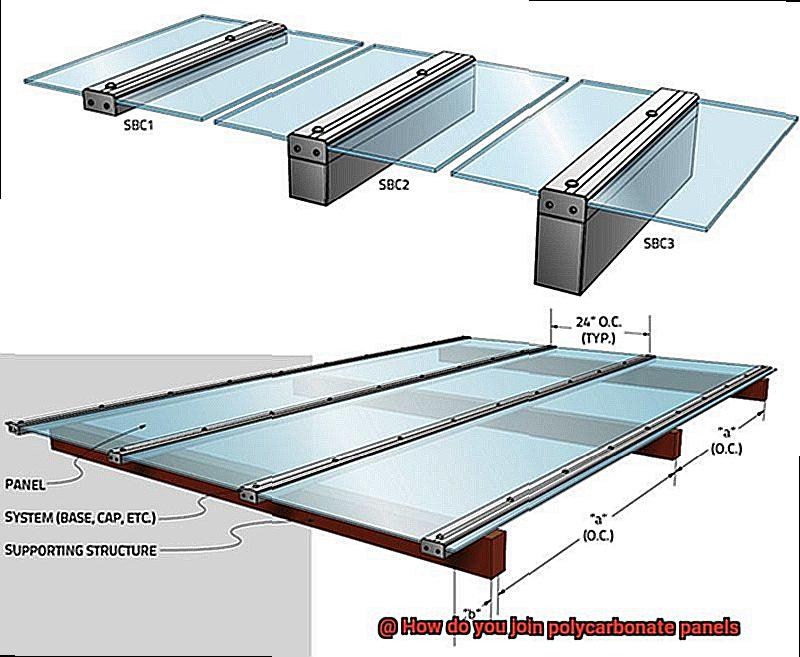
Joining polycarbonate panels is crucial for various applications, from architectural designs to greenhouse structures. With different joining methods available, it’s essential to understand the advantages and considerations of each approach. In this blog post, we will focus on adhesive bonding as the primary method for joining polycarbonate panels.
The Elegance of Adhesive Bonding:
Adhesive bonding is preferred for its simplicity and ease of use. Using adhesives designed for polycarbonate panels creates a strong and visually appealing bond. Here are some advantages and considerations when using adhesive bonding:
Advantages:
- Simplicity: Adhesive bonding is straightforward, accessible to professionals and DIY enthusiasts.
- Seamless Appearance: Correctly done adhesive bonding creates a smooth joint, enhancing visual appeal.
- Flexibility: Adhesive bonds allow for slight movement or expansion.
Considerations:
- Surface Preparation: Thoroughly clean panels and create a rougher texture by lightly sanding them for better adhesion.
- Adhesive Selection: Choose an adhesive that matches bond strength, flexibility, and resistance to environmental factors.
- Application and Curing Time: Follow manufacturer’s instructions regarding application and curing time for optimal results.
Other Joining Methods to Consider:
While adhesive bonding is popular, explore alternative methods as well:
- Mechanical Fasteners: Use screws or bolts for a strong connection that allows easy disassembly. Pre-drill holes in panels and use washers or gaskets for secure load distribution.
- Thermal Welding: Melt panel edges together using heat for a watertight and durable bond in specific applications. Requires specialized equipment and expertise.
JQ6FvUnyUAA” >
Conclusion
In conclusion, the joining of polycarbonate panels is a crucial step in creating structures that are both sturdy and visually appealing. Fortunately, there are several methods available, each with its own unique advantages and considerations.
One popular choice is adhesive bonding, which offers simplicity and a seamless appearance. By utilizing adhesives specifically designed for polycarbonate panels, you can achieve a strong bond that enhances the visual appeal of your project. However, it’s important to note that proper surface preparation and adherence to curing time are essential for optimal results.
For those seeking a secure connection that can be easily disassembled if needed, mechanical fasteners such as screws or bolts are an excellent option. These durable fasteners provide even load distribution when used with washers or gaskets. It’s worth noting that while they offer functionality, visible fasteners may impact the overall aesthetics of your installation.
If you’re looking for a method that creates a watertight and durable bond without the need for visible fasteners or adhesives, thermal welding is an excellent choice. This technique involves melting the panel edges together to achieve fusion. However, it’s important to have specialized equipment and expertise to ensure proper fusion without discoloration or warping.
Interlocking systems are commonly used in roofing applications due to their secure and durable connections with minimal risk of leaks or damage. While they require additional accessories, these systems offer easy installation and disassembly.
For those seeking maximum strength and stability while minimizing drawbacks, hybrid methods combine different techniques such as using mechanical fasteners alongside adhesive bonding. However, it’s important to note that these methods may involve more complex installation procedures and additional materials.
When choosing the right method for your application, consider factors such as aesthetics, durability, ease of installation/disassembly, and compatibility with your specific project requirements.

